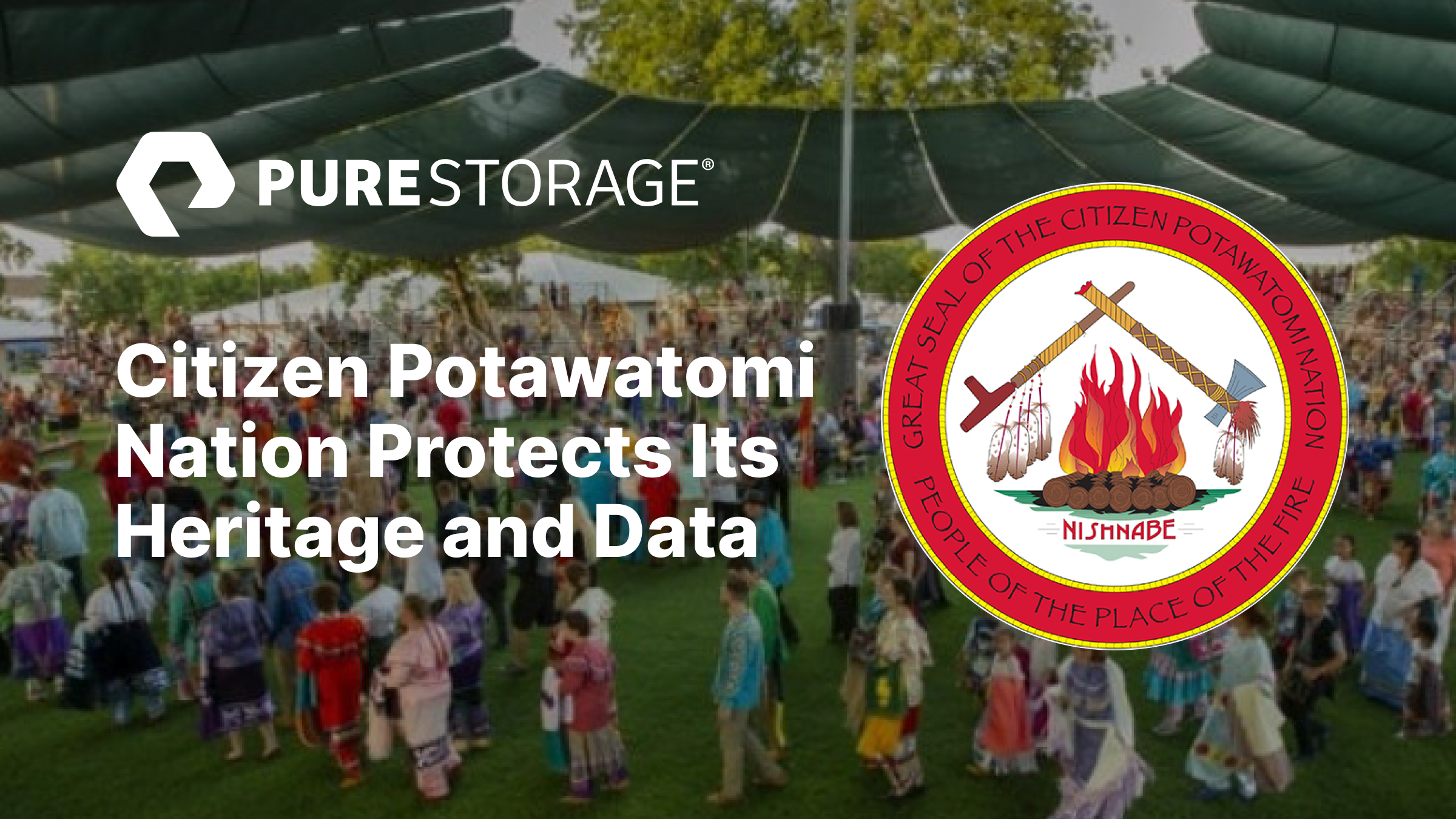Photo caption: Tribal members enter the powwow arena at the annual Citizen Potawatomi Nation Family Reunion Festival Powwow.
This is a guest post by Christopher M. Abel, Director of IT, Citizen Potawatomi Nation
Citizen Potawatomi Nation is my employer. It’s also my tribe—a Native American people with a long and proud history. My grandmother was one of the longest-serving employees of the Citizen Potawatomi Nation, with a 30-year tenure. As a director for the tribe, she was instrumental in bringing healthcare services to members.
Today, as the director of IT, I’m continuing her legacy by using technology to support the tribe’s mission. It’s my job to make sure the Nation can deliver a wide range of services to its 30,000 tribal members. That includes everything from the Cultural Heritage Center, tribal rolls, and Indian child welfare programs to grocery stores, casinos, and gas stations. All of them are at least partially dependent on our core infrastructure. The same goes for websites and general government operations.
Over the past few years, we’ve significantly expanded our digital capabilities to keep up with the times, serve members effectively, and run the government efficiently, with the ultimate goal of preserving the Potawatomi culture and language. In the digital era, there’s no better way to achieve all that than to adopt fast, scalable storage that can keep up with our expanding data. That’s why we’ve moved almost everything to Pure Storage®.
Running a Government on Pure Performance
When we first started considering Pure, we were looking to replace our HP 3PAR SAN. Between our two on-premises data centers, the 3PAR systems took up a full rack of space and weren’t keeping up with the tribe’s digital initiatives. With Pure Storage FlashArray™, we could get better performance in a smaller footprint. And with the Pure Evergreen™ Storage subscription model, there was no need for a forklift refresh every three years.
Since then, we’ve had 100% uptime and six non-disruptive software upgrades. The Pure 1® storage management dashboard enables us to see that things are running seamlessly. We’re also spending much less time on provisioning. More importantly, we saw immediate performance gains across our operations, including accounting, the tribal rolls database, the museum catalog search tool, and our online Potawatomi dictionary. That means Citizen Potawatomi Nation can be much more responsive to the needs of members and deliver modern government services to help them thrive.
Capturing Tribal History in Perpetuity
We were concerned about more than just performance—agility and simplicity were also top of mind. Our data is growing exponentially, especially as the Cultural Heritage Center adds large digital assets that are important to the tribe. These include birth and death records, veteran records, and family photos and videos. We are particularly focused on capturing the stories of our elders, who share firsthand knowledge about our ancestors or other tribal customs that we can pass on to future generations. These recordings can last up to an hour, and we keep both the final, edited versions and the raw footage for our archives.
Naturally, these are large files, and we were already at capacity with our existing storage. And demand for these assets can be unpredictable—we never know when members will request to watch these videos. But when they do, we want to make sure we can provide access quickly. We needed highly performant and scalable storage for all types of data, not only in the Cultural Heritage Center but also across the government.
That’s why we added FlashBlade® as our unified fast file and object storage platform to handle our more demanding workloads such as file storage and museum assets. As the Cultural Heritage Center continues to digitize valuable tribal artifacts, we can just add blades to scale capacity and performance. This allows us to maintain control over our data and expand at our own pace. And when it’s time for a refresh, we’ll again rely on the proven Evergreen Storage subscription model.
FlashBlade proved to be extremely cost-effective, especially when we factored in how simple it is to manage. It takes us far less time to provision data for virtual machines and to get new services up and running—with the right-click of the mouse, we’re done. Of course, the natural synergies between FlashBlade and FlashArray also make our jobs easier. For example, the audio and video files that accompany our online Potawatomi dictionary are stored on FlashBlade—but the virtual machines that house our web servers reside on FlashArray. They work together seamlessly so that tribal members can search for something in English, or from Potawatomi back to English, quickly and easily.
The Freedom to Innovate with Pure
One of the things I’ve come to enjoy about working for Citizen Potawatomi Nation is that there are many different ways to approach a problem. In our tribe, we don’t just throw money at problems—we have to find creative ways to do things. Pure gives us that option from a storage perspective, and I really enjoy the resulting freedom to innovate. As we work toward providing our members with more access to tribal data, we don’t have to worry about our storage environment and can spend more time making life better for the tribe.![]()
![]()





